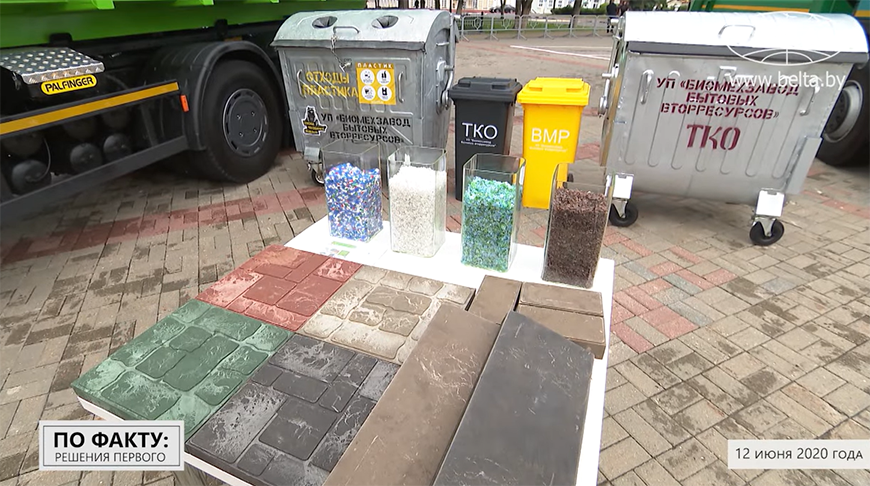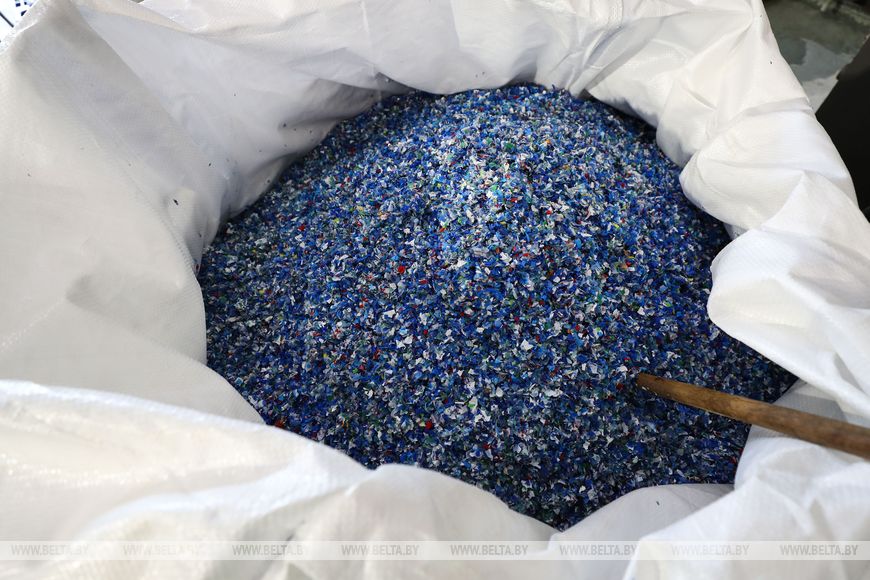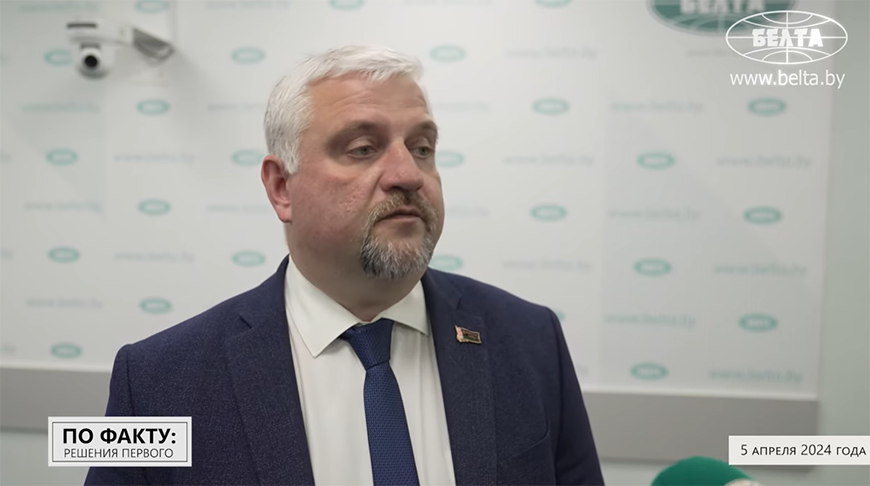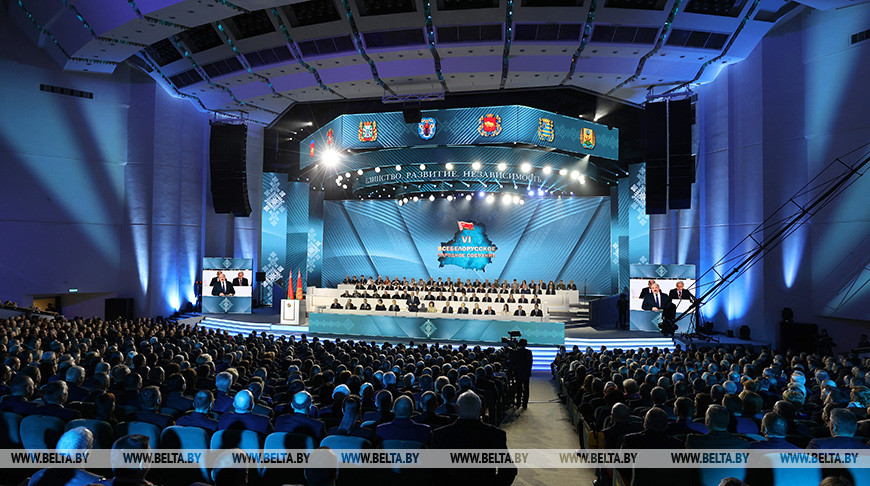Lukashenko urges more focus on waste recycling
News
27.11.2024 | 17:32
In May 2019, in the run-up to the 2nd European Games, Aleksandr Lukashenko visited the Student Village. There, the president was shown the kitchen and the dining room for participants of the sports event. The head of state was outraged to learn that they planned to use plastic tableware. The president stressed that Belarus needs to recycle 50-60% of waste and use secondary raw materials more actively. In this episode of BelTA’s YouTube channel “After the Fact: Lukashenko’s Decisions” we will tell you what kind of garbage is considered "long-lived". Where is Tetrapak recycled in Belarus? How is fuel made from garbage?
How much municipal waste does Belarus generate per capita?
In 1997, every Belarusian produced about 177kg of waste. Since then, the amount has grown two and a half times. Now the country generates 435kg of garbage per capita.
“About 4 million tonnes of municipal waste are generated annually in the Republic of Belarus. Of these, about 3.2 million are household waste. The remaining waste is recyclable. This type of waste gets to recycling factories through a system of waste sorting and collection and purchase of waste from individuals and legal entities,” said Andrei Beketa, First Deputy Minister of Housing and Public Utilities of Belarus.
According to experts, up to half of our ‘garbage basket’ is packaging, mainly polymer. This is the garbage that will outlive us.
“Today 425 business entities in the Republic of Belarus collect and procure secondary material resources. Including plastic waste. How long plastic waste will live is difficult to calculate. In fact, we do not know. It will definitely outlive all of us, our children and grandchildren. These estimates are from scientists. In general, we can say that plastic waste takes from 100 to 1,000 years to decompose. This is long-lived waste,” said Svetlana Matskevich, Chief Information Specialist at the Operator of Secondary Material Resources.
On 1 January 2021, Belarus banned the use and sale of disposable plastic tableware in catering. The sector began to switch to more environmentally friendly options: paper straws, cutlery and cups and also glass bottles.
Where is tetrapak recycled in Belarus?
In 2021, Belarus commissioned an enterprise to process another material that practically does not decompose: tetrapak. Its decomposition in the natural environment takes about 500 years. Aleksandr Lukashenko was told about the idea of creating such a facility at the Belgips enterprise.
Aleksandr Lukashenko was told about the idea of creating such a facility at the Belgips enterprise, which the president visited in March 2020. Belgips produces building materials and is engaged in waste processing. The head of state was told that the company would lease the Pukhovichi cardboard factory and process tetrapak there.
An estimated 9,000-13,000 tonnes of tetrapak packaging end up as municipal solid waste every year. The president was informed that half of it is to be processed in Pukhovichi. In addition, the facility was going to recycle other industrial waste such as cups, plates, labels and wallpaper waste to recover pulp and supply it to Belarusian enterprises.
Tetrapak consists of several layers of paper, polyethylene and aluminum. Every year, 20,000 tonnes of such packaging are thrown away in the country. In Pukhovichi District, 300 tonnes are recycled. Not much, but better than nothing. The resulting raw materials are used to make cardboard for furniture factories, while the polyaluminum mixture is exported to Russia.
What Belarusian cities have waste recycling facilities?
In general, the amount of recovered secondary resources from municipal waste is growing every year. According to Andrei Beketa, over the past 10 years, it has grown from 10% to 33.3% at the end of last year. Operational data suggests that the figure is approaching 38% this year.
This is largely due to the construction of advanced waste recycling facilities. For example, a waste sorting and recycling plant is being renovated near Minsk. The renovation project has been completed by 25-28% by now. The capacity of this facility will increase 6 times. The facility will be put into operation next year.
“We run municipal waste recycling plants in Brest, Vitebsk, Gomel, Grodno, Mogilev, Minsk, Baranovichi, Polotsk and Orsha. Another facility will be commissioned in Bobruisk this year. Waste recycling plants in Volkovysk, Gomel and Novopolotsk are also under construction. Design documentation is being developed for facilities in Pinsk and Pukhovichi,” Andrei Beketa said.
What is RDF?
Refuse-derived fuel will be produced at the waste recycling plant in Minsk. Its calorific value is comparable to wood pellets. A similar project is currently underway in Volkovysk.
“The first project to burn RDF was implemented at a cement plant in Volkovysk, Grodno Oblast. This type of fuel is used as a substitute for natural gas and coal, which allowed the plant to cut costs and increase the amount of energy generated. The first tonnes of RDF have already been produced and successfully tested at the Grodno waste recycling plant,” Andrei Beketa noted.
“The national strategy provides for producing RDF from municipal solid waste (MSW). It will be used as fuel at cement plants in Belarus. One of our key areas of work is composting solid municipal waste to obtain soil that can be used for landscaping,” said Maksim Tarasov, Head of the Waste Management Regulation Department of the Ministry of Natural Resources and Environmental Protection of Belarus.
What does Lukashenko want from the waste recycling industry?
Waste can be recycled and reused. Waste paper is recycled into packaging and sanitary and hygienic products. Broken glass is used to make new cans and bottles. Tiles are made from polymer waste. Such tiles were shown to the president during his working trip to Vitebsk Oblast. The advantages of such tiles include weight and price.
“We should resolve the problem of household waste collection and recycling within the next 2-3 years. We will have to take it up a notch. It is outrageous that we still take waste to landfills, bury it, create mountains of garbage. We should come to grips with this situation. Recycling can be a lucrative business. Plus it is good for environment, it keeps the country clean. It creates jobs and raw materials for the manufacturing industry,” the head of state said.

Land reclamation and closure of landfills is a separate issue. This process is not fast, but it has to be done.
At the meeting with Minsk activists in December 2018 Aleksandr Lukashenko stressed that the collection, processing and disposal of municipal solid waste was an important task to address. “The capacity of the city’s only landfill will last for three or four more years. Urgent environmental solutions are needed. Otherwise, we will have dozens of garbage ‘mountains’ around Minsk. We will not know what to do with them. We do not need such ‘mountains’!” the head of state said.
“In 2010, there were 3,202 mini-landfills and 121 landfills in the housing and utilities system of the country. Today there are 102 landfills left. We are working to further reduce their number. It’s about the construction of plants and modern facilities meeting all the country’s environmental requirements,” Andrei Beketa said.
Waste sorting at Belarusian enterprises
Penalties are envisaged in Belarus for improper disposal of garbage. The fine can reach up to 30 base amounts (one base amount is Br40). Specialists of the Ministry of Natural Resources and Environmental Protection conduct regular inspections.
“Segregated waste is sent to the sorting line. There are 90 sorting lines in our country. All waste, including separately collected, undergoes additional sorting. Secondary material resources are selected and sent to various waste recycling facilities,” Svetlana Matskevich said.
At a meeting on the housing and utilities sector in April 2022, the president said that people harshly criticized waste management in the country. “Those in charge will be held accountable for this. It is absolutely unacceptable how you deal with the problem of separate waste collection, recycling and further use of recycled materials,” Aleksandr Lukashenko stressed.
According to him, the country generates more than 4 million tonnes of solid municipal waste annually. At the same time, only 790,000 tonnes of secondary material resources were stocked in 2021.
“Look, this is the Klondike. Let me explain it in simple terms. We have a huge glass industry (production of glass windows, car windows, glass for TV sets, bottles, and so on). This shouldn't end up in a landfill. All this glass, cullet and so on should be recycled and recovered from this secondary waste. This is what everyone in Western Europe does. Take Switzerland, for example: nearly 90% of this waste is recycled there. This is a cheap resource, a cheap raw material for further use. Our attitude to it is too sloppy,” Aleksandr Lukashenko said.
What should be the solid municipal waste recycling rate in 2030?
According to the national strategy, the solid municipal waste recycling rate should reach 70% in 2030, and 90% by 2035.
Speaking at the 6th Belarusian People’s Congress, the president said that building a circular economy was impossible without recycling of secondary raw materials. However, we do not care about recyclables. He cited an example of Switzerland that recycles almost 100% of raw materials.
“That's why a year ago we set a task to get rid of plastic. We have enough paper. We can substitute imports and so on. Let keep our country clean. It is of crucial importance to change our way of thinking if we want to address the waste problem, if we want to have a clean country, a green piece of Europe,” Aleksandr Lukashenko said.
BelTA – News from Belarus
© Ministry of natural resources and environmental protection of the Republic of Belarus, 2025







